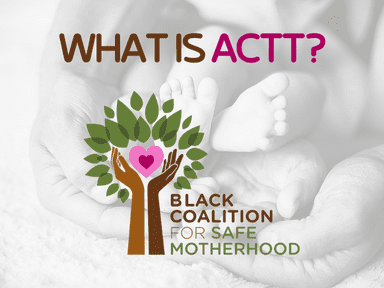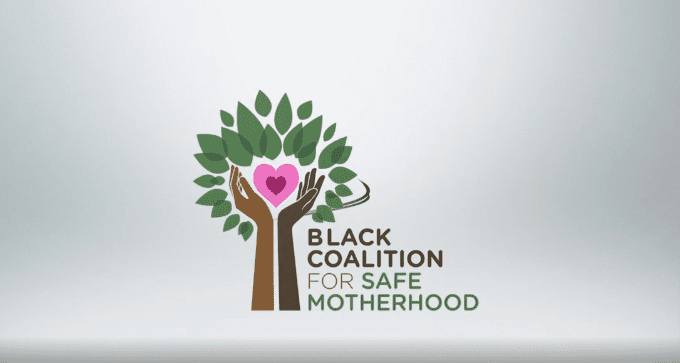ACTT for SAFE MOTHERHOOD
What is ACTT?
BCFSM™ is proud to promote the ACTT Curriculum, which was created by Black women for Black birthing people. Nurses, obstetricians, midwives, doulas, and community members have collaborated to offer a powerful healthcare advocacy toolkit, which anyone in the community can use to help improve the pregnancy, birth and post birth outcomes of Black families.

ACTT
for Safe MotherhoodA-Ask Questions Until You Understand the Answers
C-Claim Your Space – Physical and Mental
T-Trust Your Body
T-Tell Your Story


How to ACTT?
Ask questions until you understand the answers – you have the right to learn all there is to know about your pregnancy. You have the right to make educated decisions based on what you prefer for you and your family.
Claim your space – you have the right to say “No decision about me without me.” Make your wishes known.
Trust your body – you will know if something’s not right.
Tell your story – you have the right to make your voice heard. Tell your support team & your provider if you don’t feel well or if you feel unsafe. You are entitled to dignified care and to speak up if you are disrespected, dismissed or mistreated.
LEARN WHAT YOU CAN DO





If you ACTT and you still do not feel safe and respected by your provider, you do have options.
- Bring a support person with you, speak to the doctor in charge, and make sure the conversation is documented in your chart.
- Speak to the supervisor of the clinic or office. In the hospital speak to the Patient Representative, or the head of Patient Safety and Quality Care, or the head of Obstetrics.
- Find a new provider or get a second opinion (depends on the urgency of the situation, your insurance, and availability of providers).
REMEMBER:
It is your Right to have Healthcare that Protects and Serves You and Your Family.


